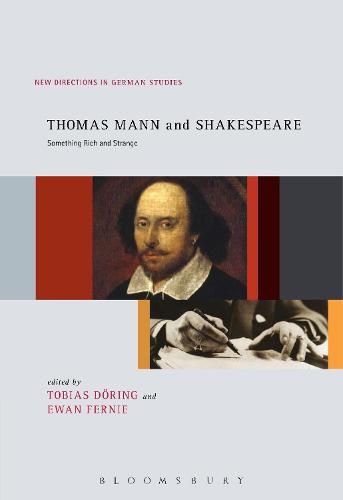Readings Newsletter
Become a Readings Member to make your shopping experience even easier.
Sign in or sign up for free!
You’re not far away from qualifying for FREE standard shipping within Australia
You’ve qualified for FREE standard shipping within Australia
The cart is loading…






Bringing together scholars from diverse disciplines and countries, Thomas Mann and Shakespeare is the first book-length study to explore the always fascinating, if sometimes disturbing, connections between Shakespeare and Mann. It establishes startling resonances between the central works of these two authors, pairing, for instance, Der Zauberberg with The Tempest, Der Tod in Venedig with The Merchant of Venice, Tonio Kroeger with Othello and Love’s Labour’s Lost with Doktor Faustus. Showing how the conjunction of Shakespeare and Mann affords new, alternative perspectives on fundamental issues such as modernity, irony, art, desire, authorship and religion, Thomas Mann and Shakespeare challenges the increasingly walled-in specialism of literary topics and periodization and demonstrates the scope for new ways of reading in literary studies.
$9.00 standard shipping within Australia
FREE standard shipping within Australia for orders over $100.00
Express & International shipping calculated at checkout
Bringing together scholars from diverse disciplines and countries, Thomas Mann and Shakespeare is the first book-length study to explore the always fascinating, if sometimes disturbing, connections between Shakespeare and Mann. It establishes startling resonances between the central works of these two authors, pairing, for instance, Der Zauberberg with The Tempest, Der Tod in Venedig with The Merchant of Venice, Tonio Kroeger with Othello and Love’s Labour’s Lost with Doktor Faustus. Showing how the conjunction of Shakespeare and Mann affords new, alternative perspectives on fundamental issues such as modernity, irony, art, desire, authorship and religion, Thomas Mann and Shakespeare challenges the increasingly walled-in specialism of literary topics and periodization and demonstrates the scope for new ways of reading in literary studies.